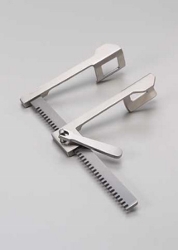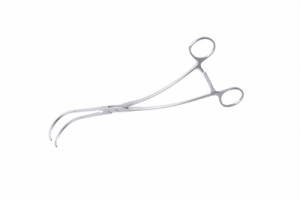
 Last month I showed photos of a laryngoscope and an endotracheal tube, and I explained how they are used to ventilate a patient who can no longer breathe on his or her own (go here for a recap). In many medical and surgical emergencies, securing the airway and ventilating the patient is the top priority.
Last month I showed photos of a laryngoscope and an endotracheal tube, and I explained how they are used to ventilate a patient who can no longer breathe on his or her own (go here for a recap). In many medical and surgical emergencies, securing the airway and ventilating the patient is the top priority.
But what happens when a patient has been shot or stabbed in the chest or abdomen, and they arrive in the ER with no vital signs, or they lose their vital signs shortly after arrival? Establishing an airway and breathing for the patient is still the first priority (the A and B of the trauma ABCs), but circulation (the C) must be restored quickly, or the patient will die. That’s where the instruments in the photos come into play.
The instrument on the left is a rib spreader (or sternal retractor), and the one on the right is a vascular clamp. They have many uses in both elective and emergency operations. The rib spreader generates significant leverage, allowing the ribs to be spread widely so structures deep in the chest can be accessed. During open heart surgery, it is used to spread the sternum. Vascular clamps come in a number of shapes and sizes. This one is long and slender so it can be used to clamp the aorta, or other major vascular structures, deep in the chest or abdomen.
How are these instruments used when treating the pulseless trauma patient? In the case of penetrating trauma (stab or gunshot wound), or under certain conditions with blunt trauma (motor vehicle accident, falls, etc.), a patient who loses their vital signs shortly before or after arrival to the ER may be a candidate for an ER thoracotomy.
An ER thoracotomy, or “cracking” the chest, means the thorax is opened in the emergency room to gain quick access to the heart and aorta. If the injury is downstream from the aortic arch, the vascular clamp is used to occlude the aorta high in the chest, thus stemming the blood loss while other resuscitative measures are initiated. If the heart is injured, or has arrested due to massive hemorrhage, temporary repairs can be undertaken as part of the resuscitation effort.
For more on the ER thoracotomy, including gruesome videos of the procedure, go to my previous post on this topic.
If you want to learn why the ER thoracotomy figures prominently in my stories, and to hear about my first experience with the procedure (which was particularly dramatic, and borders on horrifying), read Part 3 of the Me, Myself, and I Interview.
And finally, why is all this medical and surgical stuff on an author website? As I said last time, if you find medical and surgical topics fascinating, you’ll be interested in my stories. The Final Push is a short story that nicely represents my writing style. It’s the first piece of fiction I wrote and has served as a precursor for everything I’ve written since. The style is similar to what you will see in the McBride trilogy of novels—The Organ Takers, The Organ Growers, and The Organ Killers—so if you like The Final Push, you’ll like the McBride trilogy.
For more surgical terminology, jargon, and instrumentation, go here.
To learn more about The Final Push and to read an excerpt, go here.
To learn more about The Organ Takers and to read an excerpt, go here.
